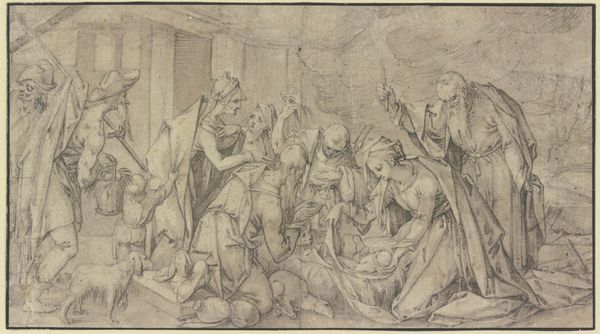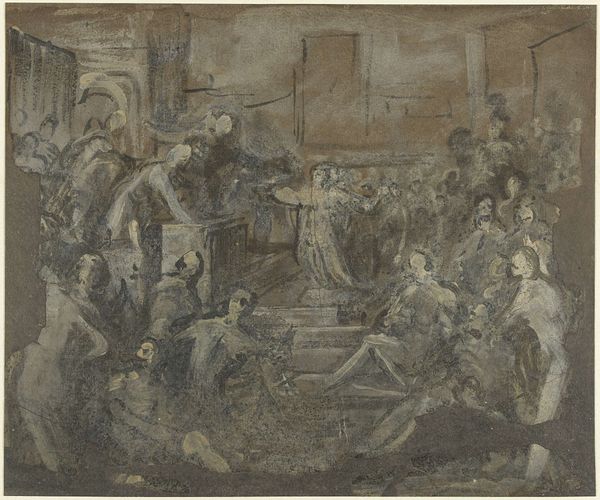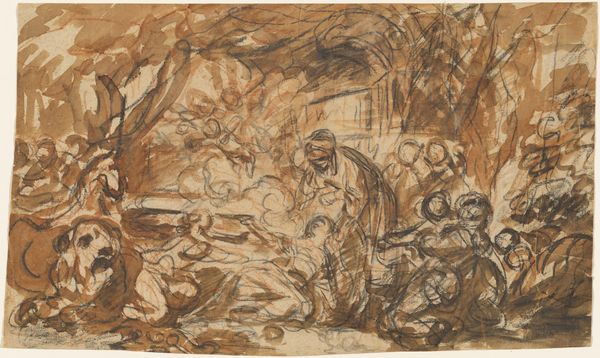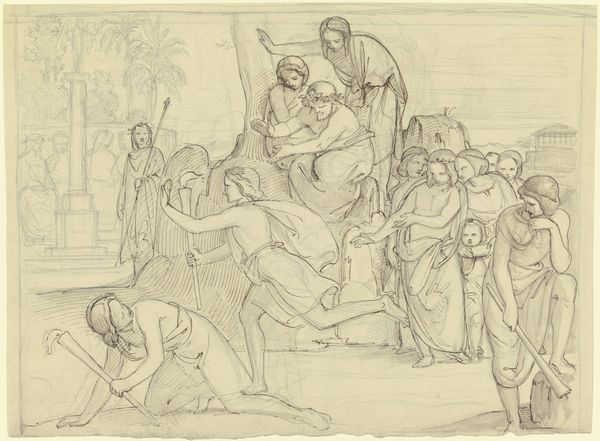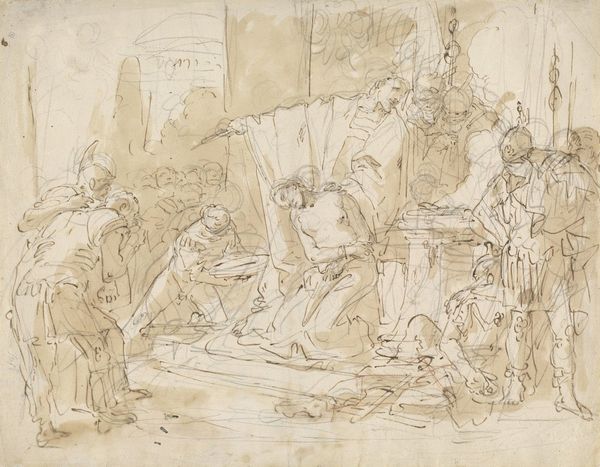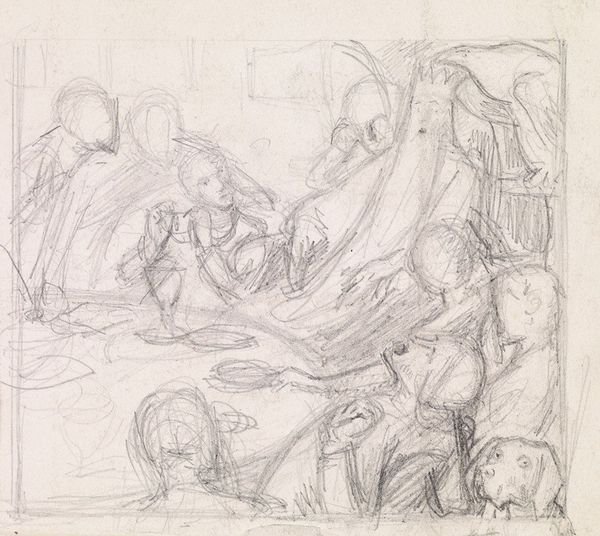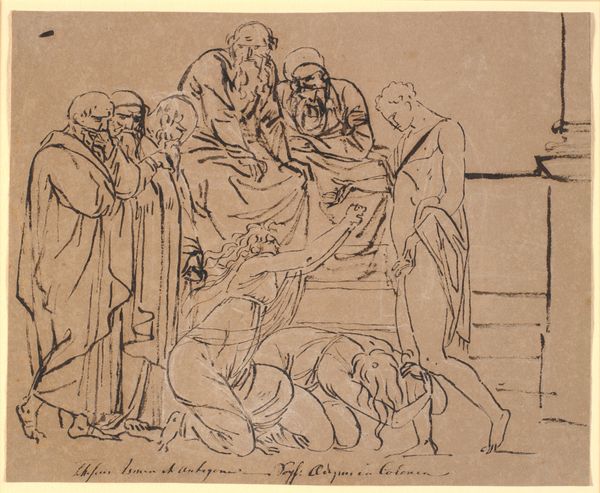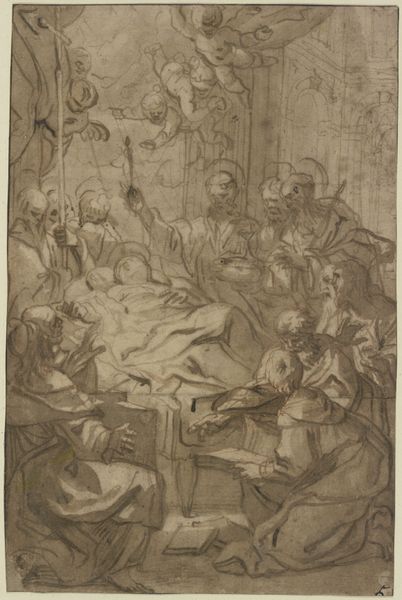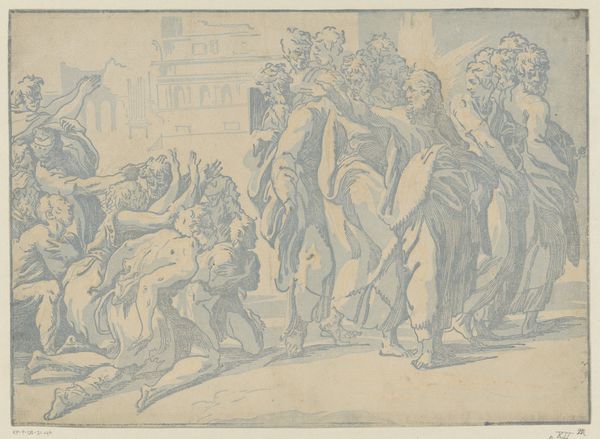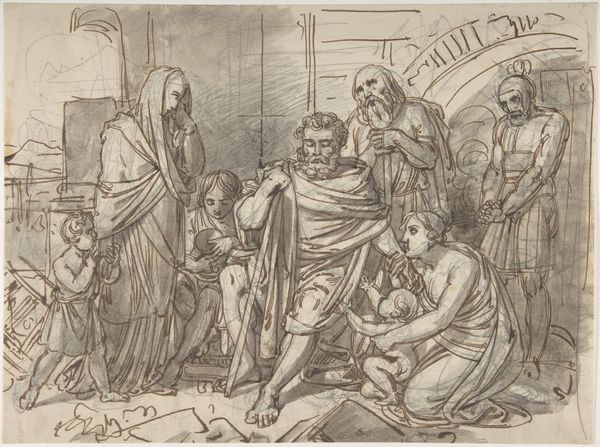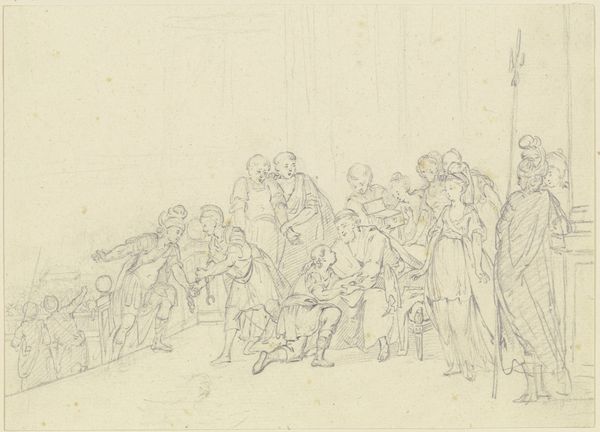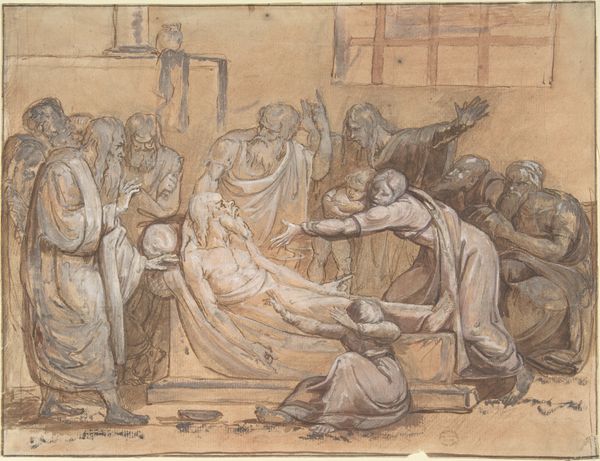
Die Versöhnung der Familien Montague und Capulet im Angesicht der Leichen von Romeo und Julia c. 1855
0:00
0:00
Copyright: Public Domain
Editor: Here we have Frederic Leighton's ink drawing, "The Reconciliation of the Montagues and Capulets over the Dead Bodies of Romeo and Juliet," circa 1855. It has such a muted palette. What do you make of this work? Curator: I see a work deeply entrenched in the socio-economic realities of 19th-century artistic production. The choice of ink on paper, a relatively inexpensive medium compared to oil paint, suggests this might be a preparatory sketch. But it could also speak to the artist’s intention to create a more accessible, reproducible image for a wider audience, perhaps through prints. Consider how the materials themselves democratize the tragic narrative. Editor: That's interesting. So, you're saying the choice of ink impacts how it could be disseminated to the public? Curator: Exactly. Think about the labor involved. Was this created quickly for preliminary studies, or was there careful planning involved in mass production of illustrations and publications? That impacts the final product and how we should appreciate it. What can we tell of its production, the staging, and dissemination? The tragic theme gains further political weight as art is brought closer to common experience. Editor: I hadn’t considered how the materials themselves might connect to audience in that way. So, beyond just aesthetics, ink and paper became tools to address class? Curator: Precisely. And it begs the question, did this choice impact the perception or value of Leighton’s work within the broader art market of his time? Editor: That makes me consider Romanticism's association with wealthy patrons when, maybe, there were some looking for other audiences. Thanks! Curator: Indeed. I’ve now learned that the meaning resides, in part, in who gets access, in the materials, process, and distribution.
Comments
No comments
Be the first to comment and join the conversation on the ultimate creative platform.
